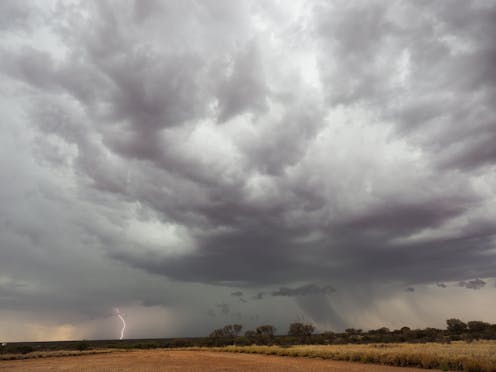Weakening currents in the Atlantic may mean a wetter northern Australia and drier New Zealand
- Written by The Conversation

Europe is warmed by heat from ocean currents, which move water from the warm tropics to the colder North Atlantic. Once the warm, salty water from the tropics reach the polar region, they cool enough to sink to the depths and flow back towards the Southern Ocean.
This enormous system of currents is known as the Atlantic Meridional Overturning Circulation (AMOC). Climate scientists are increasingly worried about the AMOC, which appears to be slowing down.
While there’s still debate over whether the AMOC has weakened over the last decades, climate models consistently show the AMOC will significantly weaken over the coming century due to the increase in heat-trapping atmospheric greenhouse gases. As more heat stays in the system, the ocean heats up and ice melts, adding fresh water to polar oceans. The overall effect is to slow these currents. The AMOC could weaken 30% by 2060.
A weaker AMOC would mean big changes in Europe, which benefits directly from the warmer waters it brings. But it would also change the climate in the Southern Hemisphere. Our new research shows a weakening of the AMOC would lead to a large change in rainfall patterns, leading to wetter summers in northern Australia and a drier New Zealand year-round. Indonesia and northern Papua New Guinea would also become drier.
Running AMOC?
In the Earth’s long history, the AMOC has gone through many periods of weakening. These were most common during ice ages, when glaciers expanded, but they also occurred during periods as warm as today.
To reconstruct past climates, researchers use data from ice cores, marine sediment cores and speleothems (mineral deposits in caves such as flowstone and stalagmites), as well as simulations performed with climate models. These data show a weaker AMOC strongly affected the climate in the Northern Hemisphere. When flows of warmer water faltered, sea ice expanded in the North Atlantic, while Europe endured colder, drier conditions and the northern tropics became drier.
If the AMOC weakens significantly, it will mean major change for Northern Hemisphere nations. Average temperatures could actually drop 3°C in Western Europe.
At present, the AMOC’s flows of warmer water give European nations more pleasant climates and keeps ports ice free, while the Canadian side of the North Atlantic has a much more severe climate.
What does it mean for the Southern Hemisphere?
Data from ice cores and marine sediment cores also showed Antarctica and the Southern Ocean became warmer during these past AMOC weakening events. Until now, we haven’t understood what an AMOC weakening would mean for rainfall in the Australasian region.
To find out, we ran climate model simulations with the Australian Earth system model, ACCESS-ESM1.5. Our modelling reveals a complex and regionally varied response, primarily shaped by large-scale atmospheric changes.
As the AMOC weakens, it sets off a chain reaction in the oceans and atmosphere which alter rainfall and temperatures across Australasia.
A weaker AMOC would affect ocean temperatures, cooling surface waters in the northern hemisphere and warming waters in the southern hemisphere. This would push the Intertropical Convergence Zone – a belt of heavy rain near the equator – further south.
This means areas such as northern Papua New Guinea and Indonesia will get less rain, while northern Australia will cop wetter summers.
Next, a warmer south equatorial Atlantic triggers atmospheric waves – large-scale movements of air that travel across the globe. These waves lower air pressure over northern Australia, pulling in more moisture and making summer rainfall even heavier.
At the same time, a weaker AMOC disrupts the usual tropical Pacific and Indian Ocean dynamics, altering wind patterns and pressure systems in the Southern Hemisphere. High pressure systems shift southward, affecting storm tracks. The overall effect is fewer storms reaching southern Australia and New Zealand, leading to drier winters.
Last, as the Atlantic currents peter out, heat builds up in Southern Hemisphere oceans rather than being carried to the poles. This results in hotter summers, particularly in southern Australia and New Zealand.
Deluges and droughts
It’s likely we will see these important currents weaken this century, bringing major change to both hemispheres.
Those in Australia and New Zealand are likely to see a magnification of some existing climate shifts, such as a drier south and wetter north.
Policymakers and resource managers need to prepare for a future where water becomes an increasingly uncertain resource.
In the north, more rain over summer could mean a greater reliance on water storage and flood mitigation. In the south, drier conditions may force increased water use efficiency and drought planning.
In New Zealand, a year-round drying trend could challenge farm productivity and hydropower generation. Long-term water management will be critical.
What happens in the North Atlantic doesn’t stay there. It ripples through the atmosphere and oceans, with far-reaching consequences.







